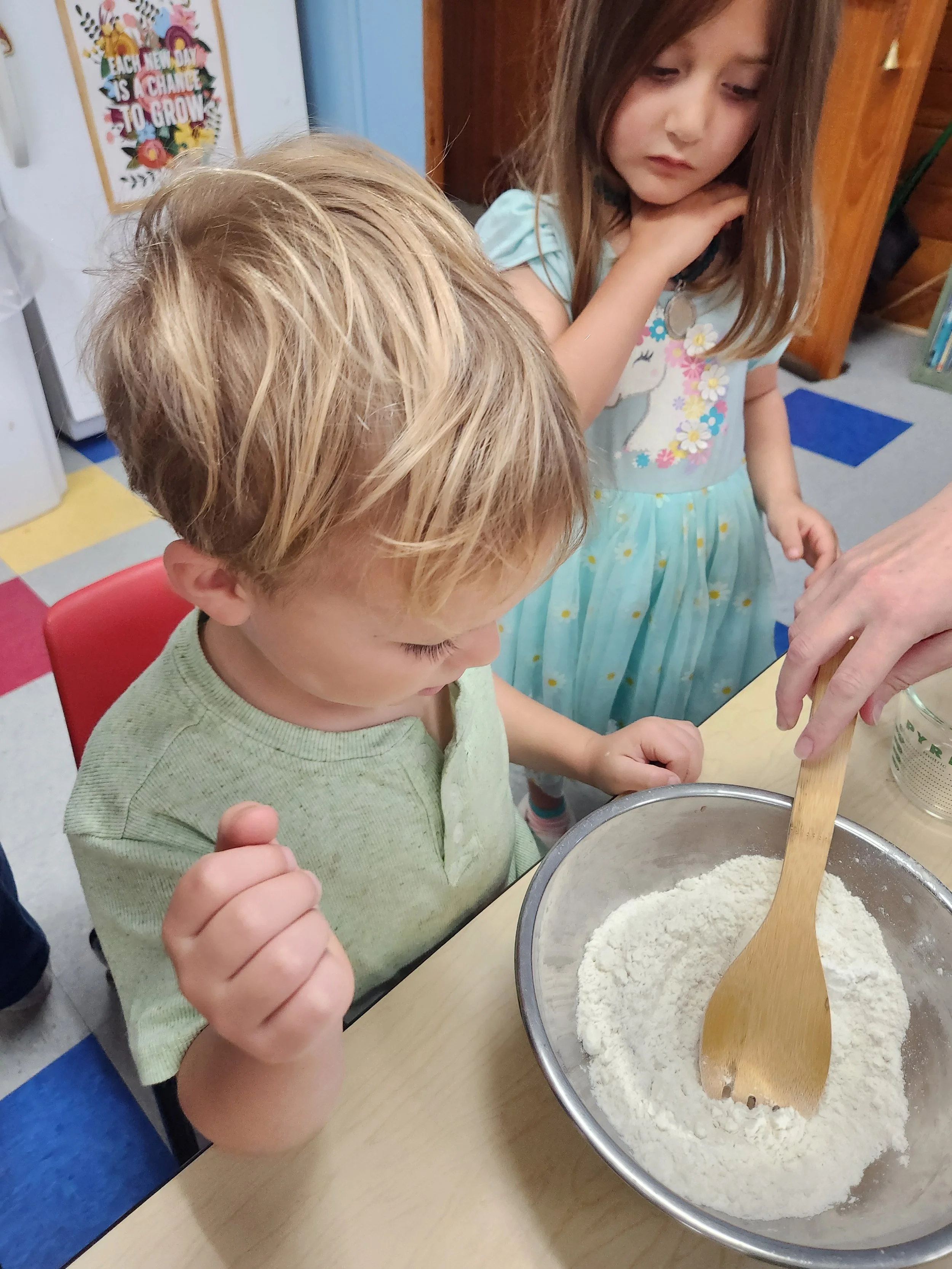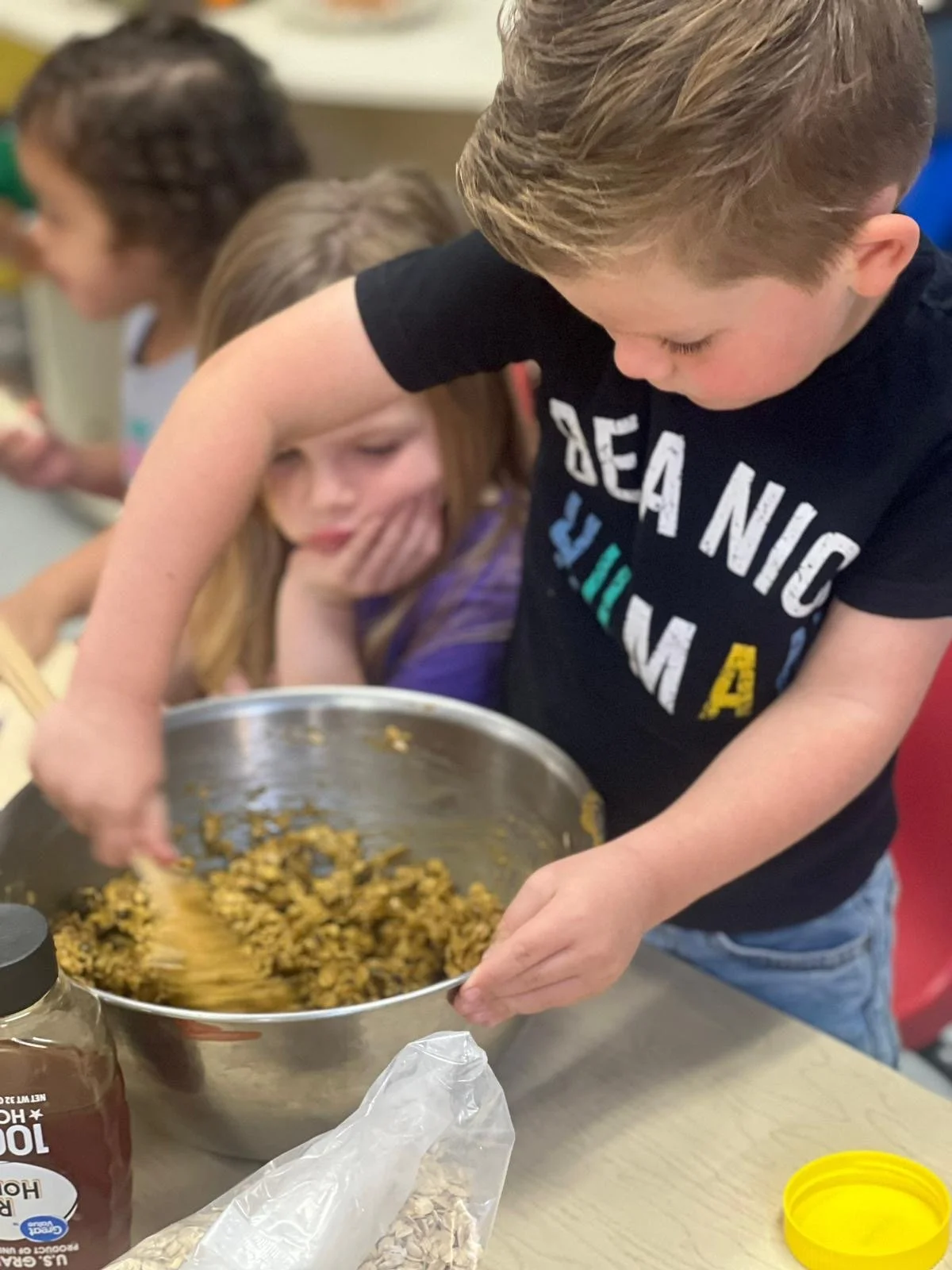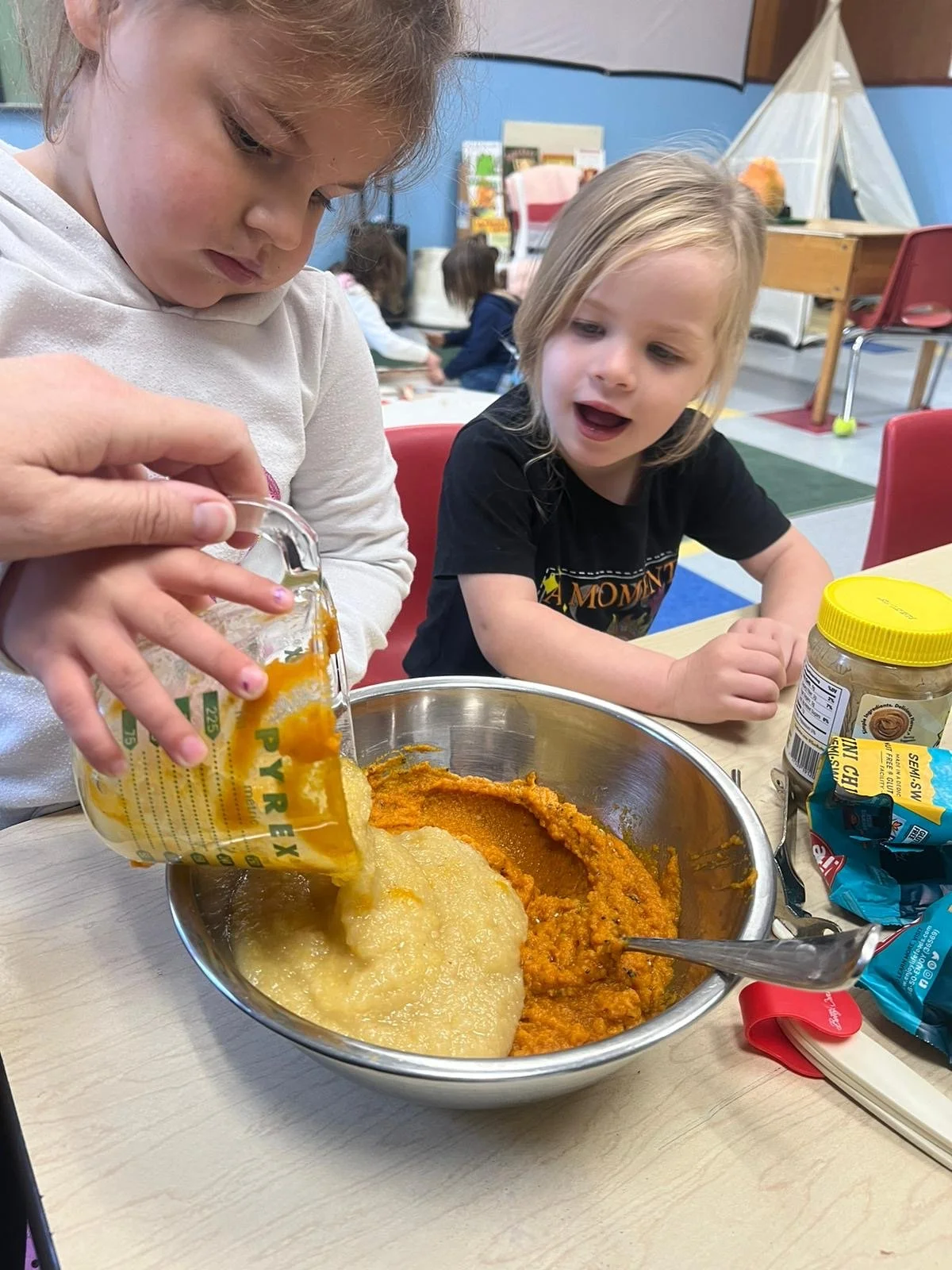Getting Kids in the Kitchen: An Interview with our Snack Coordinator
In the Montessori approach, the kitchen is more than just a place to prepare meals—it’s an environment rich with learning opportunities. But let’s be honest: the idea of cooking with kids can feel daunting, and sometimes it even tests our patience. However, the benefits of bringing children into the kitchen—from nurturing independence and fine motor skills to sparking curiosity—certainly outweigh the frustration. With a few Montessori-inspired tips and thoughtful preparation, cooking with your little one can become a rewarding, joyful experience. To help ease the process, we spoke with Lindsay, who leads snack and meal preparation at Little Garden Montessori. She shares her advice on making cooking safe, fun, and educational for toddlers and preschoolers. Plus, don’t miss this month’s kid-friendly recipe, Dairy-Free ChocolateChip Pumpkin Cookies, perfect for little chefs to help create!
1. What are some simple, safe tasks kids can start with in the kitchen?
Lindsay: Some simple and safe tasks kids can start with include cutting or chopping fruits and veggies (using kid-safe knives), stirring ingredients, measuring, and peeling. These activities build fine motor skills and improve hand-eye coordination, making them perfect for young helpers.
2. What do you look for in a recipe to make it kid-friendly for cooking together?
Lindsay: When choosing recipes to make with kids, I look for ones that are easy to follow and fun. Healthy recipes are a priority, but I also like to choose dishes that look appealing to children so they’re excited to try what they made.
3. What utensils or tools do you find easiest for kids to use?
Lindsay: Kid-safe knives are great for cutting softer fruits and vegetables. They help kids feel more involved and capable. The more they practice, the more skilled they become, and that sense of accomplishment is so rewarding for them!
4. Are there steps you have younger children (ages 2.75 to 3) do versus steps for older children (ages 4 to 6)?
Lindsay: Yes, I definitely adjust tasks based on age and experience. For younger children, I often start with measuring, pouring, and stirring ingredients. Older children who have used a knife before can handle cutting tasks, always with supervision, of course.
5. How do you introduce kids to kitchen tools and utensils in a safe way?
Lindsay: Many of our children have some exposure to tools like peelers and knives at home, or even in our classroom through our apple and orange peeling activities. This familiarity helps, but we always introduce tools carefully and model safe use to build confidence.
6. What are some quick tips to prepare the kitchen space before cooking with kids?
Lindsay: Preparation is key. I like to make sure all ingredients and utensils are set out before starting. Kids are usually eager to dive right in, so having everything ready helps keep the flow and keeps them focused on the tasks.
7. Do you have any tricks to keep kids engaged and focused during cooking?
Lindsay: Talking through each step as we go keeps them engaged. I explain what we’re doing and why, from the beginning to the end. They’re usually so excited to see the finished result of their work, and that excitement often keeps them focused.
8. How do you handle situations where a child doesn’t want to participate or finds a task difficult?
Lindsay: Cooking should be fun, so if a child isn’t interested, I let them opt out. Some kids enjoy the process, while others are more interested in tasting the final product. If they’re struggling with a task, I encourage them to keep trying because practice really helps them improve. Usually, they’re willing to keep at it until they succeed.
9. What is one piece of advice you would give to parents who want to start cooking with their kids?
Lindsay: It’s such a valuable experience! Cooking with kids supports their motor skills, language development, self-esteem, and sense of responsibility. Plus, it fosters healthy eating habits and creates special bonding time.
10. What’s one way to make cleanup easier with kids in the kitchen?
Lindsay: Get them involved in cleanup by assigning tasks they can handle. When kids feel responsible for their “kitchen duties,” they often take pride in helping tidy up. Simple tasks like wiping surfaces or putting away ingredients can make a big difference.
Cooking with children can be an enriching experience that builds skills and creates memories. With Lindsay’s insights, hopefully you feel inspired to let your little one join you in the kitchen. Remember, the goal isn’t perfection—it’s the experience and time spent together that matter most. Happy cooking, and don’t forget to check out this month’s recipe for Dairy-Free Chocolate Chip Pumpkin Cookies, a delicious, kid-friendly treat to make together!
Do you have questions about getting your kids into the kitchen or bringing Montessori principles into your home? We’d love to hear from you—please leave your thoughts and questions in the comments below!





